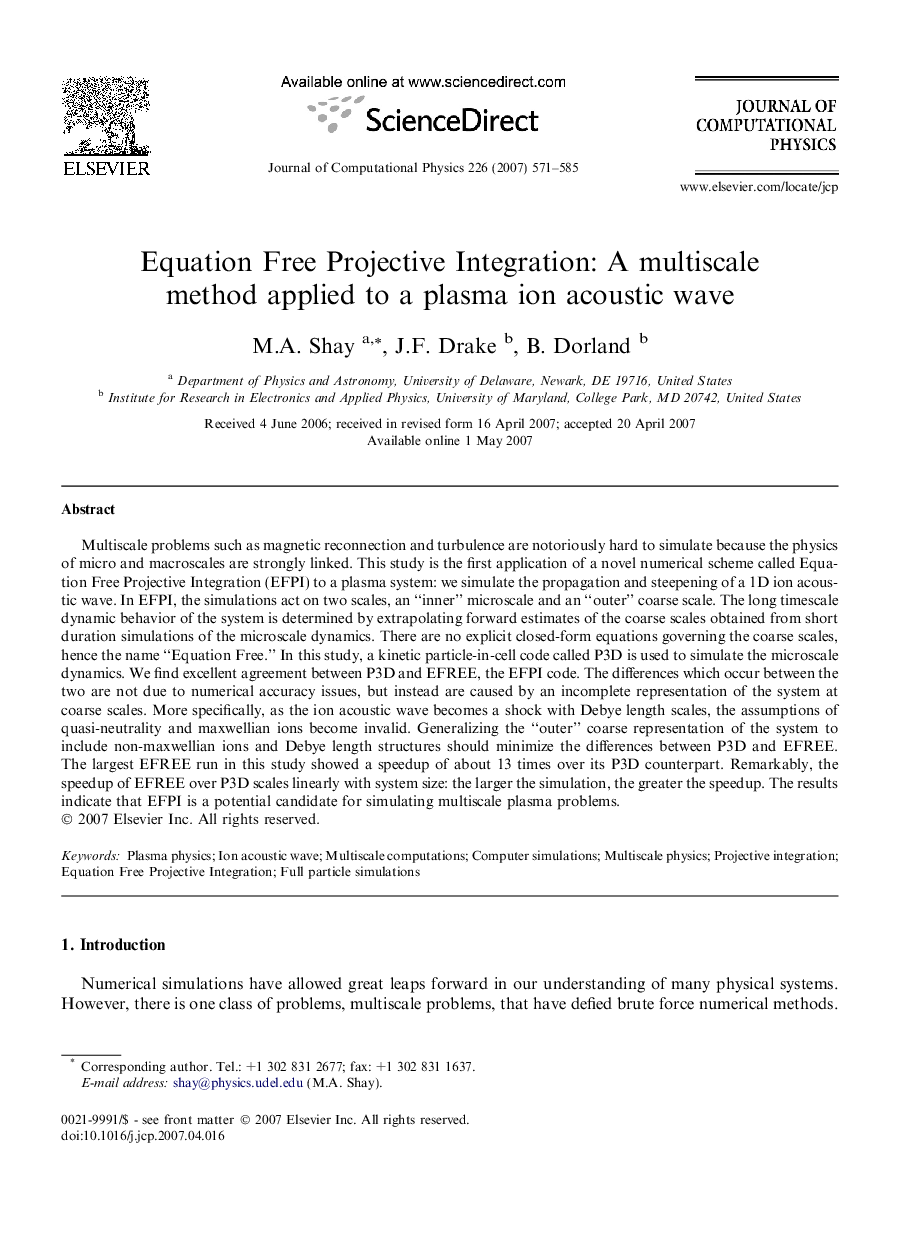| Article ID | Journal | Published Year | Pages | File Type |
|---|---|---|---|---|
| 522456 | Journal of Computational Physics | 2007 | 15 Pages |
Multiscale problems such as magnetic reconnection and turbulence are notoriously hard to simulate because the physics of micro and macroscales are strongly linked. This study is the first application of a novel numerical scheme called Equation Free Projective Integration (EFPI) to a plasma system: we simulate the propagation and steepening of a 1D ion acoustic wave. In EFPI, the simulations act on two scales, an “inner” microscale and an “outer” coarse scale. The long timescale dynamic behavior of the system is determined by extrapolating forward estimates of the coarse scales obtained from short duration simulations of the microscale dynamics. There are no explicit closed-form equations governing the coarse scales, hence the name “Equation Free.” In this study, a kinetic particle-in-cell code called P3D is used to simulate the microscale dynamics. We find excellent agreement between P3D and EFREE, the EFPI code. The differences which occur between the two are not due to numerical accuracy issues, but instead are caused by an incomplete representation of the system at coarse scales. More specifically, as the ion acoustic wave becomes a shock with Debye length scales, the assumptions of quasi-neutrality and maxwellian ions become invalid. Generalizing the “outer” coarse representation of the system to include non-maxwellian ions and Debye length structures should minimize the differences between P3D and EFREE. The largest EFREE run in this study showed a speedup of about 13 times over its P3D counterpart. Remarkably, the speedup of EFREE over P3D scales linearly with system size: the larger the simulation, the greater the speedup. The results indicate that EFPI is a potential candidate for simulating multiscale plasma problems.
